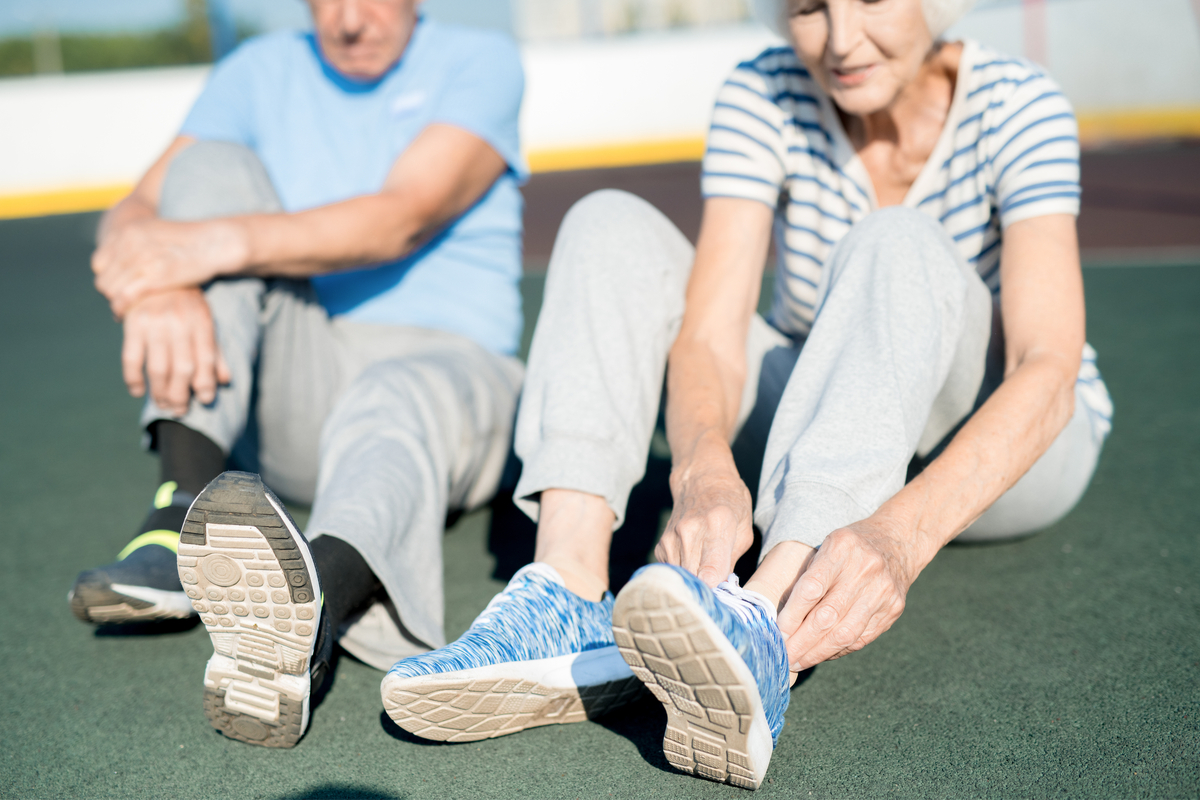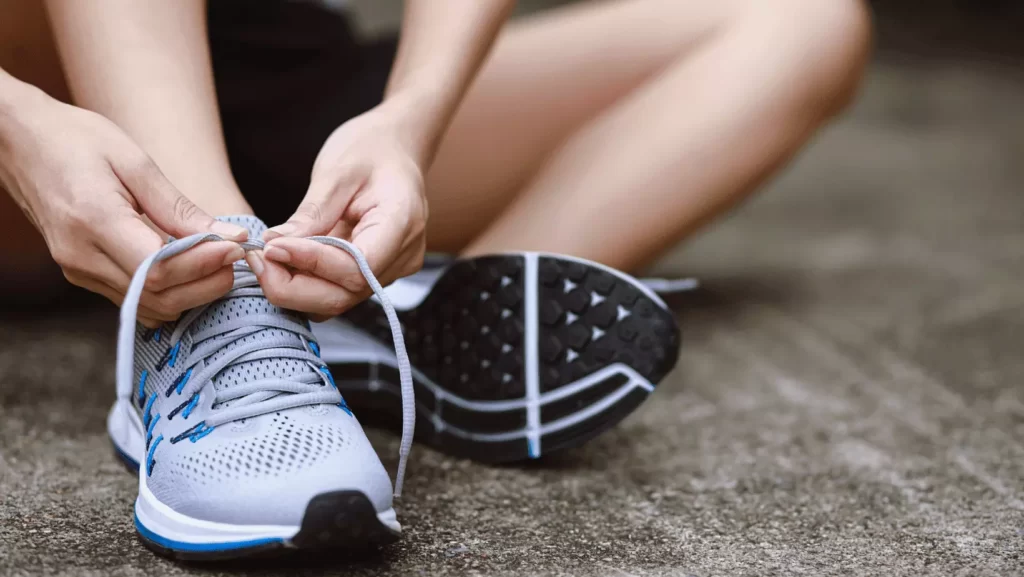Finding the right shoe for elderly loved ones can be a daunting task. Shoes need to provide comfort and support and be easy to put on and take off. Finding a shoe that fits properly is important, as ill-fitting shoes can lead to foot and ankle problems. In this blog post, we will discuss the different types of shoes available to ensure your elderly loved one fits their needs perfectly. We will look at the features to consider when selecting a shoes for elderly and how to measure for the right size. With the right information, you can ensure your loved one enjoys a comfortable fit with every step.
Elderly Footwear Woes: A Comprehensive Guide
As our loved ones age, their feet require special attention and care. Foot problems can arise, causing discomfort and difficulty with mobility. This is why it is crucial to find the right footwear for elderly individuals. This comprehensive guide will explore the common footwear woes older people face and provide practical solutions.
One of the most common foot problems among older adults is foot pain. This can be caused by arthritis, plantar fasciitis, or bunions. Ill-fitting shoes can exacerbate these issues and lead to further discomfort. Additionally, elderly individuals may have difficulty putting on and taking off shoes due to limited mobility or dexterity. To address these concerns, choosing shoes that offer proper support, cushioning, and stability is important. Shoes with adjustable closures, such as Velcro straps or elastic laces, are ideal for easy on-and-off access. Look for shoes with wide-toe boxes to accommodate foot deformities or swelling.
 Common Foot Problems Faced by the Elderly
Common Foot Problems Faced by the Elderly
As our loved ones age, they often face various foot problems that can cause discomfort and hinder mobility. Understanding these common foot problems can help us choose the right shoes to alleviate these issues. One of the most prevalent foot problems among older adults is foot pain. Conditions such as arthritis, plantar fasciitis, and bunions can all contribute to this pain. Ill-fitting shoes only exacerbate these issues and can make walking and standing unbearable.
In addition to foot pain, elderly individuals may experience difficulties putting on and taking off shoes. Limited mobility or dexterity can make the task challenging. It’s important to find shoes that are easy to slip on and off. Adjustable closures like Velcro straps or elastic laces can provide the necessary flexibility for easy access. Other common foot problems among older people include swollen feet and foot deformities. Look for shoes with wide-toe boxes to accommodate any swelling or deformities.
Factors to Consider When Choosing Shoes for the Elderly
When choosing Boots for elderly individuals, several important factors must be considered.
- First and foremost, comfort is key. Look for cushion shoes and adequate support to alleviate foot pain or discomfort. A shoe with a flexible and shock-absorbing sole can also help reduce pressure on the feet.
- Additionally, consider the ease of putting on and taking off the shoes. Elastic laces or velcro straps are great options for those with limited mobility or dexterity. Adjustable closures allow for a customized fit, accommodating any swelling or changes in foot size throughout the day.
- Another factor to keep in mind is stability. Look for shoes with a non-slip sole and a firm heel counter to provide stability and prevent falls. A shoe with a wider base can also help improve balance.
- Lastly, choosing shoes made from breathable materials is important to promote air circulation and prevent moisture buildup. This can help reduce the risk of fungal infections and keep the feet dry and comfortable.
Types of Shoes for Elderly Individuals
When it comes to choosing shoes for elderly individuals, there are a variety of options that are specifically designed to meet their unique needs. One popular type of shoe for older adults is the slip-on shoe. Slip-on shoes are easy to put on and remove, eliminating the need to struggle with laces or buckles. They often feature stretchy material or elastic panels to provide a snug yet comfortable fit.
Another type of shoe that is ideal for older people is the orthopedic shoe. These shoes are designed to provide maximum support and cushioning for individuals with foot pain or conditions such as arthritis or bunions. Orthopedic shoes often have extra padding, arch support, and shock-absorbing soles to alleviate pressure and reduce discomfort.
For elderly individuals with swollen feet or foot deformities, adjustable shoes are a great option. These shoes feature Velcro straps or elastic laces that can be easily adjusted to accommodate changes in foot size or swelling. They provide a customizable fit that ensures comfort and support throughout the day.
Features to Look for in Elderly-Friendly Shoes
When finding the perfect shoe for your elderly loved ones, there are some key features to look for. First and foremost, prioritize comfort. Look for shoes that have ample cushioning and support to provide relief from any foot pain or discomfort. A flexible and shock-absorbing sole can also help to alleviate pressure on the feet. In addition to comfort, consider the ease of putting on and taking off the shoes. Elastic laces or velcro straps are ideal for those with limited mobility or dexterity, as they allow for easy adjustments and a secure fit. Adjustable closures also accommodate any changes in foot size or swelling throughout the day.
Stability is another important feature to look for. Choose shoes with a non-slip sole and a firm heel counter to provide stability and prevent falls. A wider base can also improve balance and reduce the risk of tripping.
Tips for Ensuring a Comfortable and Safe Fit
Ensuring a comfortable and safe fit for your elderly loved one’s shoes is essential for their overall well-being. Here are some tips to help you achieve just that:
Measure their feet regularly
As we age, our feet can change in size and shape. Measure your loved one’s feet regularly to ensure you buy the right shoes. Remember to measure both feet, as they may differ in size.
Opt for the right shoe size
Choose shoes that fit properly, neither tight nor loose. Ill-fitting shoes can cause discomfort and increase the risk of foot problems. Ensure enough room in the toe box to accommodate any swelling or deformities.
Consider the time of day
Feet tend to swell throughout the day, so it’s best to measure and try on shoes in the afternoon or evening when their feet are at their largest.
Test the shoes for flexibility and stability
Check that the shoes have a flexible sole to allow natural foot movement and a stable heel counter to provide support. This will help prevent falls and promote better balance.
Look for cushioning and arch support
Shoes with adequate cushioning and arch support can help alleviate foot pain and provide extra comfort. Consider orthopedic shoes or insoles for added support if needed.
Check the grip
Look for shoes with a non-slip sole to reduce the risk of slipping and falling. This is particularly important for elderly individuals with limited mobility or balance issues.
Ensure ease of use
Shoes with adjustable closures like Velcro straps or elastic laces are easier for elderly individuals to put on and take off. They provide a secure and customized fit.
Taking Care of Your Elderly Loved One’s Feet
As we age, taking care of our feet becomes even more important, and this holds true for our elderly loved ones as well. Proper foot care can help prevent discomfort, infections, and other foot-related issues. Here are some tips to help you take care of your elderly loved one’s feet:
- Encourage regular foot inspections: Check their feet regularly for any cuts, blisters, or signs of infection. Make sure to clean and dress any wounds promptly.
- Keep their feet clean and dry: Ensure they are washed daily with warm water and mild soap. Pat their feet dry gently, especially between the toes, to prevent moisture buildup.
- Moisturize their feet: Apply a moisturizer specifically designed for feet to prevent dry skin and cracking. Avoid applying lotion between the toes, as it can create a moist environment, promoting fungal growth.
- Trim their toenails properly: Trim them straight across and avoid cutting them too short to prevent ingrown toenails. If necessary, consult a healthcare professional or a podiatrist for assistance.
- Wear clean socks: Encourage them to wear clean, breathable socks made of natural fibers to promote air circulation and prevent odor or infection.
- Promote foot exercises: Encourage gentle foot exercises, such as toe curls and ankle rotations, to improve circulation and strengthen the muscles in their feet.
FAQs
1. What are the best types of shoes for elderly individuals?
The best shoes for elderly individuals are slip-on, orthopedic, and adjustable shoes. Slip-on shoes are easy to put on and take off, perfect for those with limited mobility or dexterity. Orthopedic shoes provide maximum support and cushioning for individuals with foot pain, arthritis, or bunions. Adjustable shoes, with features like Velcro straps or elastic laces, can accommodate changes in foot size or swelling.
2. How do I measure my elderly loved one’s feet for the right shoe size?
To measure your elderly loved one’s feet for the right shoe size:
- Use a measuring tape or ruler.
- Measure both feet as they may differ in size.
- Ensure to measure in the afternoon or evening when their feet are at their largest.
- Take note of the measurements and refer to a shoe size chart for accurate sizing.
3. How do I ensure a comfortable and safe fit for my elderly loved one’s shoes?
To ensure a comfortable and safe fit:
- Prioritize comfort and look for shoes with cushioning and support.
- Choose shoes with adjustable closures like Velcro straps or elastic laces for easy adjustments and a secure fit.
- Opt for shoes with non-slip soles, firm heel counters, and wider bases for stability.
- Choosing breathable materials to promote air circulation and prevent moisture buildup is also important.
Conclusion
In this blog post, we have explored the world of Boots for elderly loved ones to find the perfect fit. We discussed the common foot problems older people face, such as foot pain, difficulty putting on and taking off shoes, swollen feet, and foot deformities. We then delved into the factors to consider when choosing shoes, such as comfort, ease of use, stability, and breathability.
| Other Good Articles to Read |
| skank blogs |
| unreal blogs |
| tba blogs |
| all city forums |
| dany blogs |
| the music blogs |
| key forums |
| the big blog theory |
| joe blogs |
| blogs 4 me |
| Blogs Emon |



